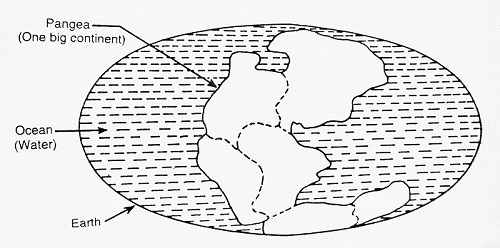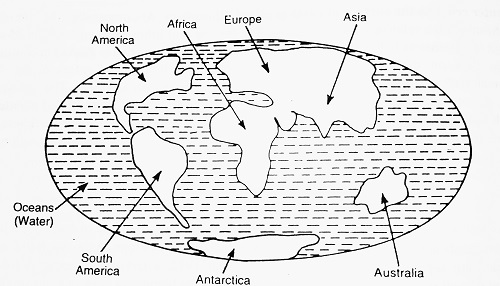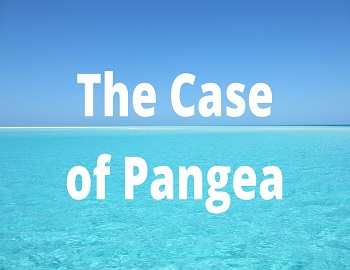Pangea:
At present we have seven big continents or landmasses on the surface of earth or on the lithosphere. These continents are North America, South America, Africa, Europe, Asia, Australia and Antarctica, which are separated by the oceans. In the year 1912, German Scientist Alfred Wegener suggested that all the present separate continents had in the beginning been one big single continent on the surface of the earth. The big single continent (or mass of land) which comprised of all the present continents put together in one piece, was called Pangea. This Pangea existed on earth about 200 million years ago. The word “Pangea” in the Greek language means “all lands”. Thus, Pangea consisted of all lands (continents) of the earth joined together in one piece. The Pangea is shown below-

It is said that Pangea which existed on earth 200 million years ago broke up into seven major pieces of land which are now called continents. These continents then started drifting away (moving away) from one another. It has now been confirmed that the various continents surely drift apart slowly. The drift of continents from one another being only about 15 centimetres every year. It is this slow and steady drift of the continents which were converted into large distances over the last 200 million years and resulted in the present position of the continents on earth. Now, if we look up at the present shape and arrangement of the various continents on the face of the earth. We would observe a curious fact that all the present continents seem to be the scattered pieces of a single big continent or Pangea. This is because the east shoulder of the South America continent can be fitted perfectly into the west shoulder of the Africa continent as shown below-

Once fitted, this combination of South America and Africa continents can be nearly fitted to the bottom of the North America continent. The Australia and Antarctica continents can also be joined to one another and then fitted to the main body of Pangea. Similarly, all the remaining continents have such shapes that they can be fitted into one another and then joined to the main body to form Pangea or a single big landmass, surrounded by water.









Comments (No)